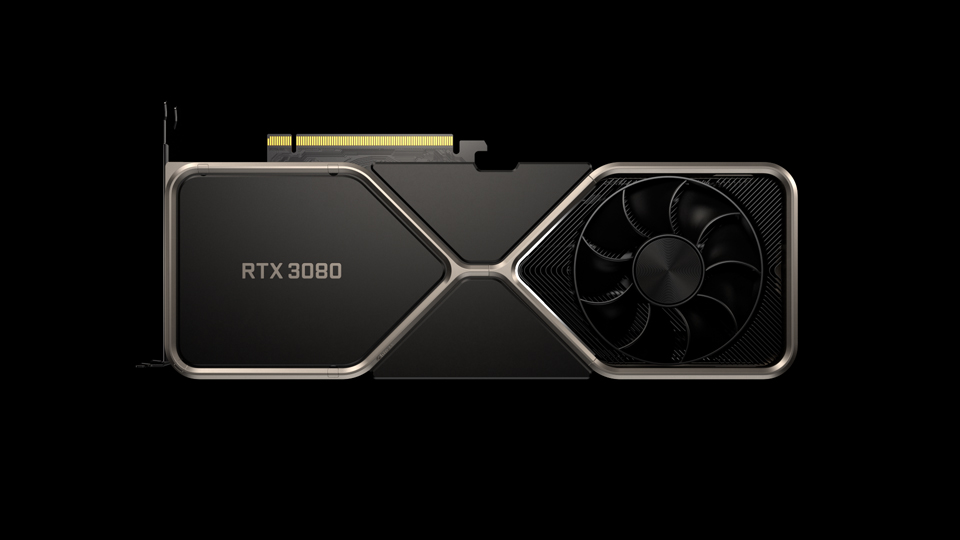GPU stands for Graphics Processing Unit.
A GPU is a type of coprocessor, which is a computer processor that is used to handle specialized tasks that are typically outside the scope of the CPU. GPUs are designed to be efficient at parallel processing, which means they can handle multiple tasks simultaneously.
While CPUs are designed to handle a single stream of instructions (known as serial processing), GPUs are designed to handle multiple streams of instructions (known as parallel processing). This makes them well-suited for handling the complex computations required for graphics and video processing.
In addition to being used for graphics and video processing, GPUs can also be used for general purpose computing tasks such as machine learning and data analysis.
GPUs are available from both AMD and NVIDIA. Both companies offer a range of GPUs, from entry-level to high-end.
AMD’s GPUs are known as Radeon, while NVIDIA’s GPUs are known as GeForce.
GPUs: Explained – IBM Technology
Table of Contents
Computational functions of GPUs
The computational functions of GPUs are typically implemented using highly parallel Streaming Multiprocessors (SMs).
Each SM contains a number of processors, known as CUDA cores. The number of CUDA cores in a GPU can range from just a few hundred to several thousand.
GPUs typically offer higher performance than CPUs for computationally-intensive tasks such as video processing and machine learning.
However, they can also consume more power and generate more heat than CPUs. As a result, GPUs are not suitable for every task.
When deciding whether to use a CPU or GPU for a particular task, it is important to consider the trade-offs between performance, power consumption, and heat generation.
GPU vs. CPU
GPUs typically have their own dedicated memory, which is used to store the data required for the computations they need to perform.
This is in contrast to CPUs, which typically use system RAM (random access memory) for their computations. The dedicated nature of GPUs means that they can often provide a performance boost over CPUs for certain types of tasks.
When it comes to graphics processing, GPUs are able to handle a variety of different 3D rendering tasks.
This includes things like rasterization, shading, and anti-aliasing. In addition, GPUs can also be used for video processing tasks such as decoding, encoding, and transcoding.
General purpose computing on GPUs (GPGPU) is a relatively new field, but has been growing in popularity in recent years.
This involves using the GPU for tasks that are not typically associated with graphics processing.
These tasks can include things like machine learning, data analysis, and even cryptocurrency mining.
Cryptocurrency Mining
Cryptocurrency mining is a process of verifying and adding transaction records to a public ledger (known as a blockchain).
In order to do this, miners need to solve complex computational puzzles. The miner that solves the puzzle first is rewarded with a certain amount of cryptocurrency.
GPUs are often used for cryptocurrency mining because they can offer a significant performance boost over CPUs.
This is due to their ability to handle large amounts of data in parallel. However, GPUs can also consume a lot of power and generate a lot of heat. As a result, cryptocurrency mining can be an expensive proposition.
When deciding whether to use a CPU or GPU for cryptocurrency mining, it is important to consider the cost of electricity as well as the initial cost of the hardware.
In some cases, it may be more cost-effective to use a CPU for mining. However, in other cases, a GPU may be the better choice.
GPU forms
Discrete GPUs
A discrete GPU is a separate piece of hardware that connects to the motherboard via a PCI Express (PCIe) slot.
Discrete GPUs are typically more powerful than integrated GPUs, but they also require more power and generate more heat.
Integrated GPUs
An integrated GPU is a graphics processing unit that is built into the CPU.
Integrated GPUs are typically less powerful than discrete GPUs, but they are more energy-efficient and generate less heat.
Hybrid GPUs
A hybrid GPU is a graphics processing unit that combines an integrated GPU with a discrete GPU.
Hybrid GPUs are designed to offer the best of both worlds, providing better performance than an integrated GPU while still being more energy-efficient than a discrete GPU.
Multi-GPU Systems
A multi-GPU system is a computer that uses two or more graphics processing units (GPUs) to process information.
Multi-GPU systems can offer a significant performance boost over single-GPU systems, but they also tend to be more expensive and generate more heat.
CrossFire and SLI
CrossFire and SLI are technologies that allow multiple GPUs to work together to process information.
These technologies are typically used in gaming PCs, as they can offer a significant performance boost over single-GPU systems.
However, CrossFire and SLI systems can also be more expensive and generate more heat.
GPU companies
NVIDIA
NVIDIA is a leading manufacturer of GPUs. The company’s products are used in a variety of markets, including gaming, professional visualization, data center, and automotive.
NVIDIA’s GeForce RTX 20-series GPUs are its latest offering for gamers, while its Quadro RTX 4000 is its flagship GPU for professional users.
AMD
AMD is another leading manufacturer of GPUs.
The company offers a wide range of products for different markets, including gaming, professional visualization, data center, and automotive.
AMD’s Radeon VII is its latest high-end GPU for gamers, while the Radeon Pro WX 8200 is its flagship GPU for professionals.
Intel
Intel is a leading manufacturer of CPUs, but the company also offers a line of GPUs known as Iris Pro.
Iris Pro GPUs are designed for use in Ultrabooks and other thin-and-light laptops.
ARM
ARM is a leading manufacturer of CPUs, but the company also offers a line of GPUs known as Mali.
Mali GPUs are used in a variety of devices, including smartphones, tablets, and set-top boxes.
Qualcomm
Qualcomm is a leading manufacturer of mobile processors, but the company also offers a line of GPUs known as Adreno.
Adreno GPUs are used in Qualcomm’s Snapdragon processor lineup, which is found in many Android smartphones and tablets.
Vivante
Vivante is a leading manufacturer of GPUs for the automotive market.
The company’s products are used in infotainment systems, driver assistance systems, and other automotive applications.
GPU FAQs
What is a GPU?
A GPU is a type of computer chip that is designed to process graphics.
GPUs are used in a variety of devices, including PCs, smartphones, tablets, and game consoles.
What are the different types of GPUs?
There are several different types of GPUs, including discrete GPUs, integrated GPUs, hybrid GPUs, and multi-GPU systems.
What is the difference between a CPU and a GPU?
A CPU is designed to process information, while a GPU is designed to process graphics.
However, both CPUs and GPUs can be used for cryptocurrency mining.
What are the benefits of using a GPU for mining?
GPUs can offer a significant performance boost over CPUs for mining.
They can also be more energy-efficient and generate less heat.
What are the risks of mining with a GPU?
Mining with a GPU can be risky, as it can put strain on the hardware and wear it out over time.
Additionally, mining with a GPU can generate a lot of heat, which can be damaging to the computer.
Why do some GPUs have more than one fan?
Some GPUs have more than one fan to help keep them cool while they are mining.
Additionally, multi-fan GPUs can offer better airflow and cooling than single-fan GPUs.
How do I know if my GPU is compatible with my computer?
Most modern computers should be able to support a wide range of GPUs.
However, it is always best to check with the manufacturer before purchasing a GPU.
What are the different ports on a GPU?
The most common ports on a GPU are DVI, HDMI, and DisplayPort.
DVI is typically used for desktop monitors, while HDMI and DisplayPort are used for televisions and other displays.
Can I use a GPU for gaming?
Yes, GPUs can be used for gaming. In fact, many gamers prefer to use GPUs over CPUs due to their performance benefits.
However, GPUs can also be more expensive than CPUs, and they generate more heat.
Can I use a GPU for video editing?
Yes, GPUs can be used for video editing. However, they are not as necessary as they are for gaming, as most video editing software can run on a CPU.
What is the best GPU for mining?
The best GPU for mining depends on a variety of factors, including hashrate, power consumption, and price.
Some of the best GPUs for mining include the AMD Radeon RX 580, Nvidia GeForce GTX 1080 Ti, and AMD Radeon Vega 56.
What are some high-powered GPUs?
Some high-powered GPUs include the AMD Radeon RX 580, Nvidia RTX 3080 Ti, and AMD Radeon Vega 56.
These GPUs offer great performance for mining and gaming. However, they can also be expensive and generate a lot of heat.
What are some low-powered, cheap GPUs?
Some low-powered GPUs include the Nvidia GeForce GT 1030 and AMD Radeon RX 550.
These GPUs are less expensive and generate less heat than high-powered GPUs. However, they also offer lower performance.
Summary – GPUs
GPUs are types of computer chips designed to process graphics.
They are used in PCs, smartphones, tablets, and game consoles.
GPUs can offer significant performance boosts over CPUs for mining and gaming.
However, they can also be more expensive and generate more heat. It is always best to check with the manufacturer before purchasing a GPU.
Some of the best GPUs for mining include the AMD Radeon RX 580, Nvidia RTX 3080 Ti, and AMD Radeon Vega 56. Some low-powered GPUs include the Nvidia GeForce GT 1030 and AMD Radeon RX 550.
These GPUs are less expensive and generate less heat than high-powered GPUs. However, they also offer lower performance.
When selecting a GPU for mining or gaming, it is important to consider factors such as hashrate, power consumption, and price.
Related
- What are the Normal GPU Temperatures While Gaming?
- Best Nvidia RTX 3050 Ti Laptops
- Best Gaming Laptops
- Best Gamertags
- Core i7 vs. i9
- Ryzen vs Intel i5
- 11+ Parts of a Desktop Computer
- Why Don’t Most Laptops Have Touchscreens?
- 4+ BEST Best Water Cooled Graphics Cards [Ranked][Top Picks]
- How to Increase the Mining Hashrate of Your GPU
- How to Fix GPU Artifacting
- Is GPU Water Cooling Worth It?
- 5+ BEST Graphics Cards Under $200
- 5+ BEST Low-Budget Graphics Cards
- 5+ BEST Mid-Range GPUs [Top-Ranked Graphics Cards]
- 4+ BEST GPU for Plex Video Transcoding [Ranked][Top Picks]
- 5+ BEST GPU for 1080p 144Hz Gaming [Ranked][Top Picks]
- 5+ BEST Graphics Cards for Under $300
- RTX 3080 vs 3080 Ti – Which One Should You Get?
- RTX 3080 Ti vs 3090 – Which One Should You Get?


